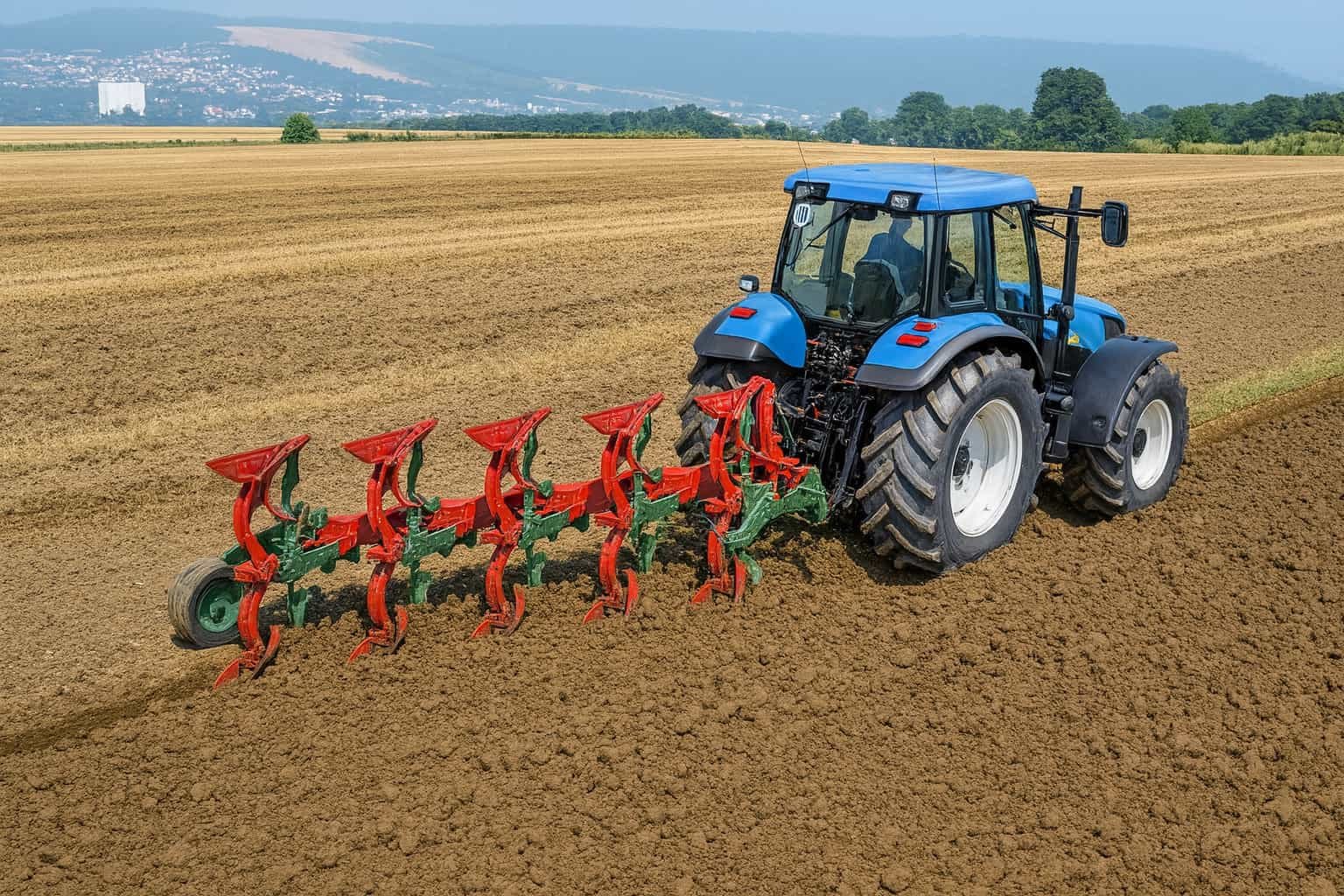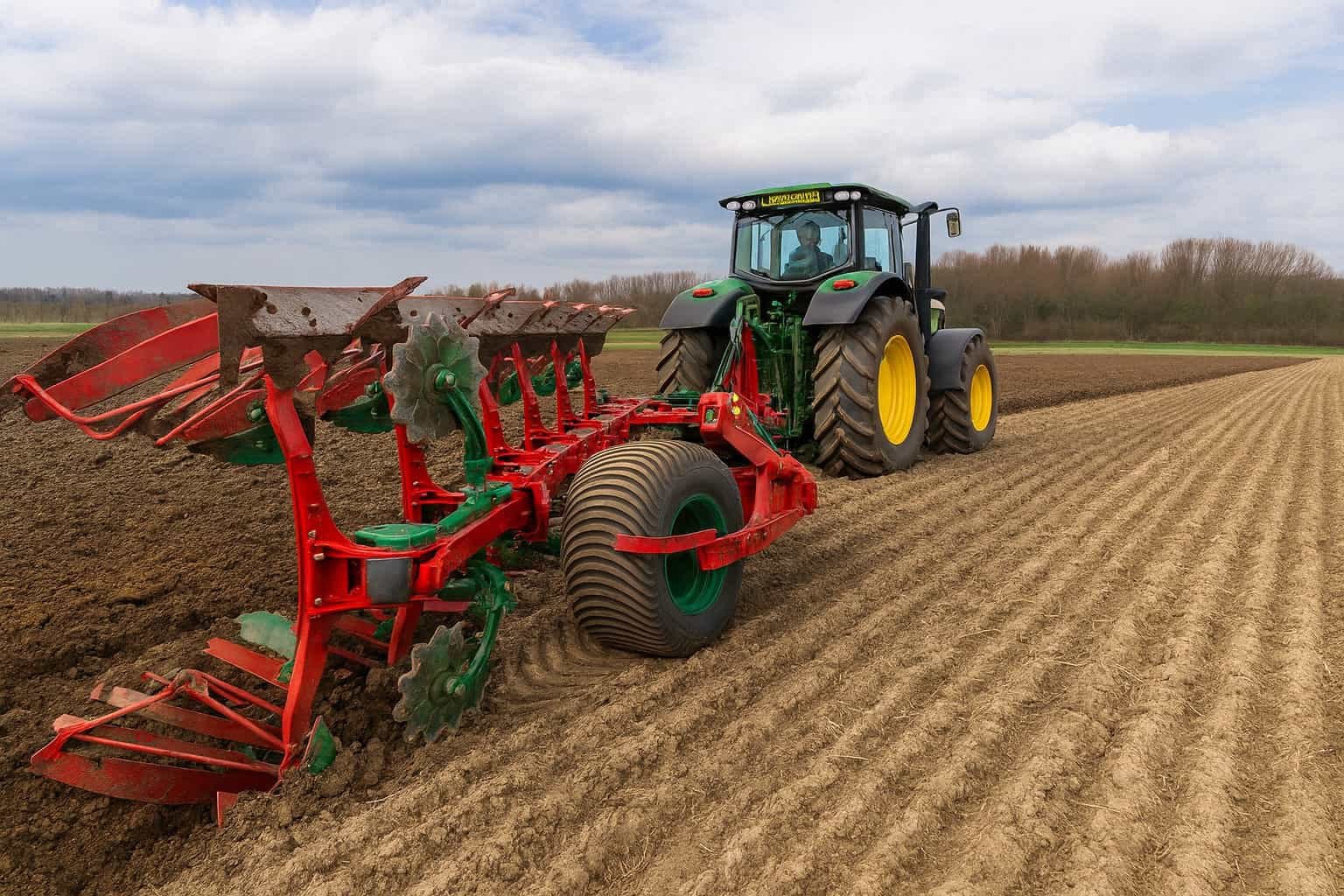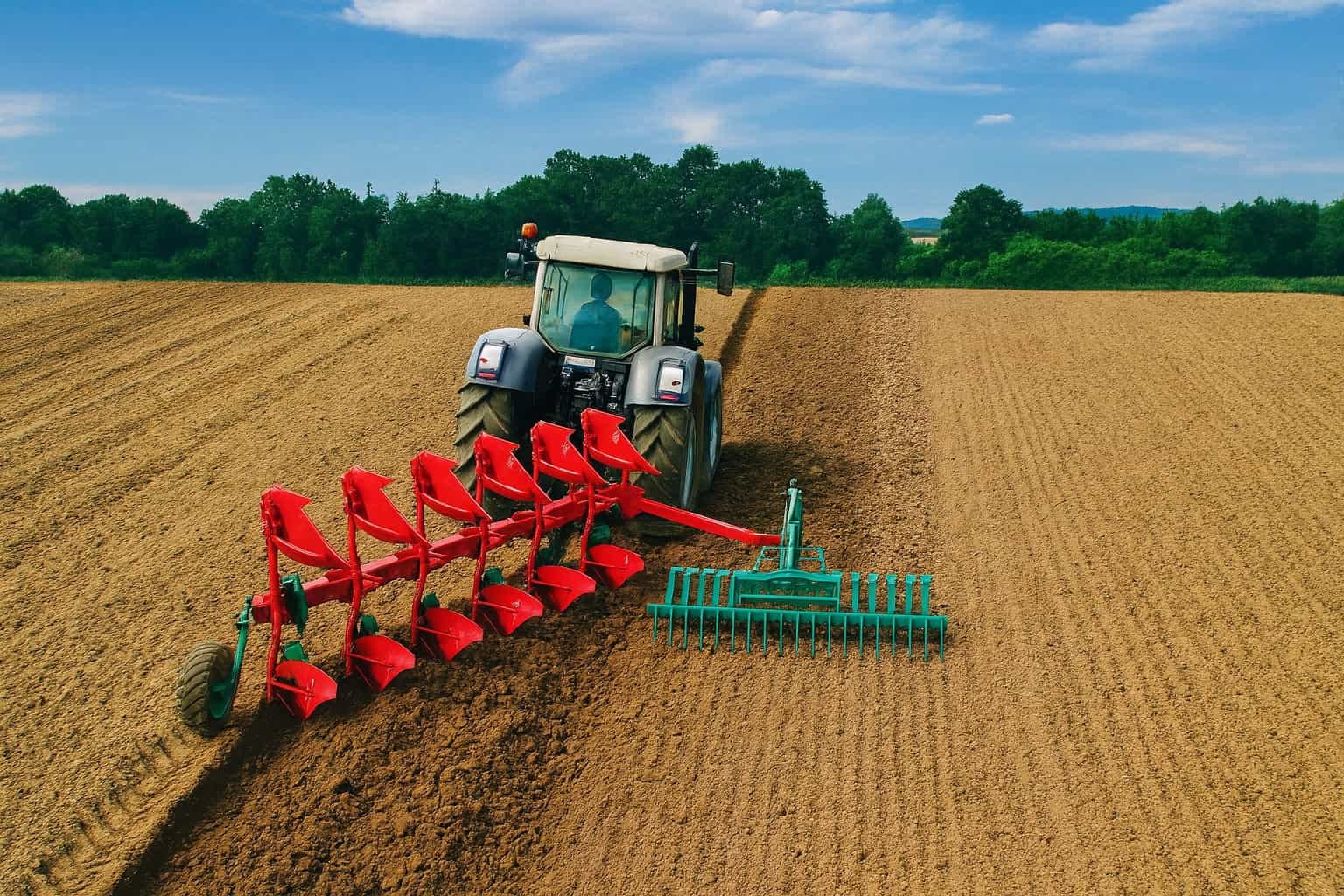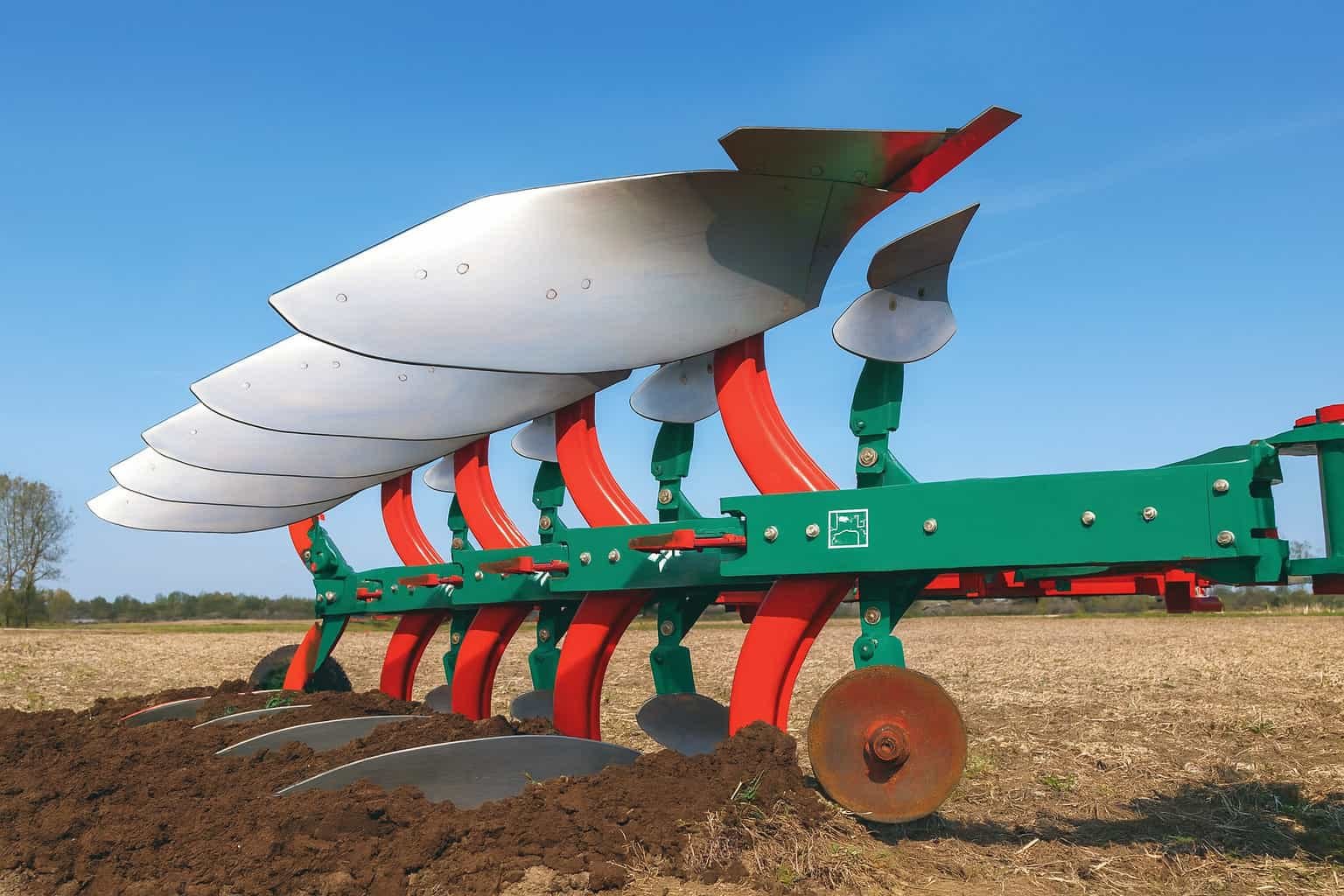What is Reversible Plough?
A reversible plough is an agricultural implement used for tilling soil by turning it over, which helps in preparing the land for planting crops. It features a mechanism that allows the plough to be flipped, enabling it to work in both directions without needing to turn the tractor around.
Key Features:
- Bidirectional Operation: The plough can be reversed, allowing continuous ploughing in alternating directions.
- Time Efficiency: Reduces the time spent on turning the tractor, increasing overall field productivity.
- Soil Health: Improves soil aeration and nutrient distribution by turning the soil layers.
How It Works:
- Attachment: Mounted to the tractor via a three-point linkage.
- Reversal Mechanism: Operated hydraulically or mechanically to flip the plough.
- Ploughing Process: Turns the soil as the tractor moves, reversible action ensures even field coverage.
This technology enhances agricultural efficiency, making it a valuable tool for modern farming.
What is the main function of a plough?
The main function of a plough is to turn over the upper layer of the soil, bringing fresh nutrients to the surface while burying weeds and crop residues. This process prepares the soil for sowing seeds.

Key Functions of a Plough:
- Soil Preparation: Breaks up and aerates the soil, enhancing its structure.
- Nutrient Exposure: Brings deep soil nutrients to the surface, promoting plant growth.
- Weed Control: Buries weeds and crop residues, reducing competition for crops.
- Moisture Retention: Helps in retaining soil moisture by creating a more uniform soil structure.
How It Works:
- Ploughshare: Cuts through the soil.
- Mouldboard: Turns the soil over.
- Landside: Stabilizes the plough.
By efficiently turning the soil, ploughs play a critical role in modern agriculture, enhancing soil health and crop yields.
What is the Difference Between Conventional and Reversible Plough?
Conventional ploughs turn the soil in one direction, creating furrows that all lean the same way. Reversible ploughs, on the other hand, can turn the soil in alternating directions, allowing for more efficient and even ploughing.

Key Differences:
- Direction of Ploughing:
- Conventional Plough: Only turns soil to one side.
- Reversible Plough: Can turn soil to both sides, either left or right.
- Efficiency:
- Conventional Plough: Requires returning to the starting side after each pass.
- Reversible Plough: Eliminates the need for return trips, saving time.
- Field Suitability:
- Conventional Plough: Best for smaller or irregularly shaped fields.
- Reversible Plough: Ideal for large, rectangular fields.
- Soil Management:
- Conventional Plough: May cause compaction issues due to repeated passes.
- Reversible Plough: Provides balanced soil turning, reducing compaction.
Understanding these differences can help farmers choose the right plough based on their specific needs and field conditions.
What Are the Different Types of Plough?
There are several types of ploughs, including moldboard ploughs, disc ploughs, chisel ploughs, and rotary ploughs. Each type serves different purposes in agricultural practices.

Moldboard Plough
- Function: Turns over the soil completely, burying weeds and residue.
- Best for: Preparing seedbeds for crops.
Disc Plough
- Function: Uses concave discs to cut and turn the soil.
- Best for: Hard, dry, or sticky soils.
Chisel Plough
- Function: Breaks up compacted soil without turning it over.
- Best for: Soil aeration and root penetration.
Rotary Plough
- Function: Uses rotating blades to break up soil.
- Best for: Creating fine tilth for seedbeds.
Each plough type has its unique applications, tailored to different soil conditions and agricultural needs.
What is the difference between a plough and a harrow?
A plough is used for primary tillage, breaking and turning the soil to prepare for planting. A harrow, on the other hand, is used for secondary tillage, smoothing and refining the soil surface after ploughing.

Key Differences:
- Function:
- Plough: Breaks, turns, and aerates the soil.
- Harrow: Smooths and refines the soil surface.
- Timing in Agricultural Process:
- Plough: First step in soil preparation.
- Harrow: Follow-up step after ploughing.
- Design:
- Plough: Consists of large blades or discs.
- Harrow: Features tines, discs, or teeth for finer soil work.
Usage:
- Plough: Best for hard, compacted soil.
- Harrow: Ideal for breaking clods and leveling the field.
Understanding the distinct roles of a plough and a harrow ensures effective soil preparation, leading to better crop yields.
What are the advantages of a reversible mouldboard plough?
A reversible mouldboard plough offers several advantages, including increased efficiency, reduced soil erosion, and better soil turnover. It allows farmers to work more land in less time and improves the overall quality of soil preparation.

Key Benefits
- Increased Efficiency
- Reduces time spent on turning at field edges.
- Allows continuous ploughing without lifting the plough.
- Reduced Soil Erosion
- Minimizes soil disturbance and erosion.
- Ensures better conservation of soil structure.
- Better Soil Turnover
- Provides uniform soil inversion.
- Enhances organic matter distribution and weed control.
- Cost-Effective
- Lowers fuel and labor costs due to efficient operations.
- Reduces wear and tear on machinery.
- Versatility
- Suitable for different soil types and conditions.
- Can be adjusted for various ploughing depths and angles.
In summary, a reversible mouldboard plough enhances agricultural productivity by improving efficiency, soil health, and cost-effectiveness.


